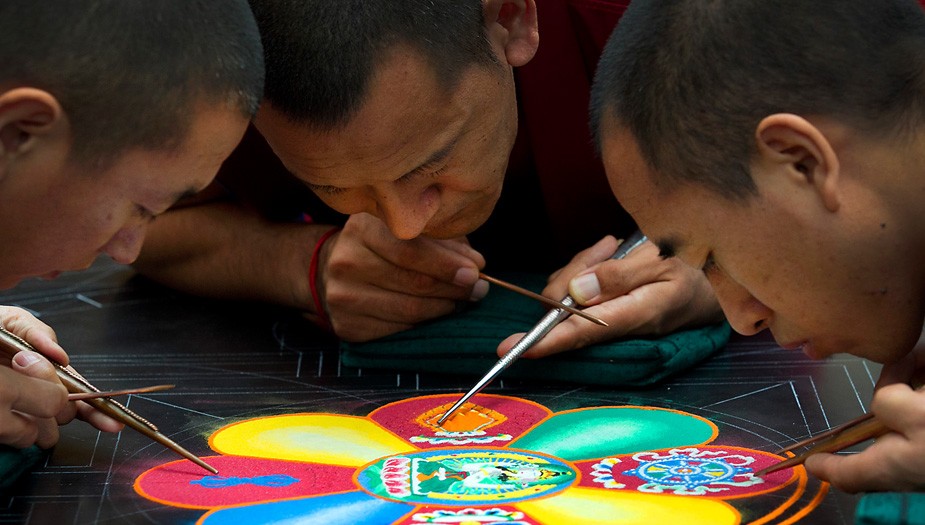Nachrichten und Ansichten
The impermanence of design and Sand Mandala’s of Tibet.


Impermanence of design
With the advent of the digital age and a culture driven by speed and efficiency, much of contemporary design has shifted away from an old aspiration: creating artifacts or experiences with a sense of permanence.
A defining feature of this fast-paced world is the idea of immutable impermanence—the recognition that not everything will endure, nor should it. Yet, the concept of impermanence is far from new.
Tibetan Buddhism, which entered Tibet in the 7th century A.D., has long embraced impermanence through its rich cultural rites and traditions. One of the most renowned practices is the creation of intricate Sand Mandalas, which are believed to emanate healing and purification.
The basic form of a mandala is a square with four gates containing a circle and a central point, symbolizing radial balance. The term “mandala” itself first appears in the Rigveda, an ancient Indian collection of Vedic Sanskrit hymns dedicated to deities. These hymns, organized into ten books (Mandalas), are part of Hindu tradition.
Mandalas hold spiritual significance across various traditions, used to focus practitioners' attention, provide spiritual guidance, establish sacred spaces, and assist in meditation or trance states. While the practice of creating mandalas is widespread in Buddhism, Sand Mandalas are a unique feature of Tibetan Buddhist culture. Instead of being woven or painted, they are created using millions of grains of colored sand, painstakingly placed through special funnels.
A high-ranking priest chooses the location and design of the mandala. After a ceremonial blessing with music and chants, monks work for days or even weeks to complete the intricate design. The mandala is believed to possess powers of healing and purification, with monks chanting and praying during its creation, invoking deities thought to reside within the mandala. This, in turn, releases positive energy to those who view it and to the surrounding environment.
The mandala’s destruction, marking the end of the ceremony, symbolizes the Buddhist belief in life’s impermanence. The sand is then ceremoniously dispersed into a river or stream, spreading the healing and purifying energies into the world. Half of the sand is also distributed to onlookers, further emphasizing the Buddhist commitment to sharing blessings with all.
If you’re exploring new design concepts, digital branding, or social media strategies, we’d love to discuss how we can help bring your vision to life.







